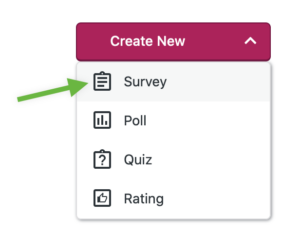
Special Notes:
Listen to our L&L lectures online: WHRI Lunch & Learn Series – Women’s Health Research Institute
Visit our Stats corner in the e-blast for previously published tips on data management and analysis: E-Blast Archive – Women’s Health Research Institute (whri.org)
You don’t have to be an expert to create a survey, but by following a few survey best practices, you can make sure you’re collecting the best data possible. Here are some basic points to consider when preparing the survey:
- Clearly define the survey’s purpose. It should be clear, attainable, relevant, specific, and measurable.
- Ensure that every question adds value and knowledge to the subject you are investigating.
- Identify your target audience.
- While we often want to ask as many questions as possible, it is good practice to keep the survey short, simple, and with a logical flow.
- It is beneficial to divide your survey into modules that combine questions related to specific sub-areas of your research.
- Ask direct questions – vaguely worded questions can confuse respondents and make the analytical data less useful.
- Effective survey design isn’t solely about obtaining the necessary information for your research but also encouraging participants to think differently.
- Avoid leading and biased questions. Certain words or phrases can introduce bias into your survey, pointing respondents in a particular direction. This bias can affect future analysis. As a rule of thumb, when conducting a survey, provide only the wording necessary for respondents to give informed answers. Keep your question wording focused on the respondents and their opinions, rather than introducing anything that could be construed as your own point of view.
- Use terminology that respondents will understand. Keep the language as plain as possible, avoiding professional and technical jargon. Keep sentences short, but be cautious of oversimplifying.
- Use response scales whenever possible. Employ validated measures in your survey to ensure that your results are comparable. Use validated measures as designed, avoiding alterations to the questions.
- Avoid using grids or matrices for responses, as they can be confusing.
- While Yes/No questions are popular and easy to analyze, they can lead to a loss of important information. Consider rephrasing them to include a response scale for richer data.
- If you use scales that have not been previously validated, ensure that you include a complete range of possible answers.
- Before publishing your survey, validate it for skip flow to avoid future errors and unanalyzable data.
- Take your survey for a “test drive” by pre-testing it before sending it to participants.
- Ensure that the database where you store your survey data is designed to align with the survey’s instruments and is validated, particularly if it’s an online survey.
Good luck with your Statistics adventure!
Contact Sabina for statistics help or questions here: sabina.dobrer@cw.bc.ca